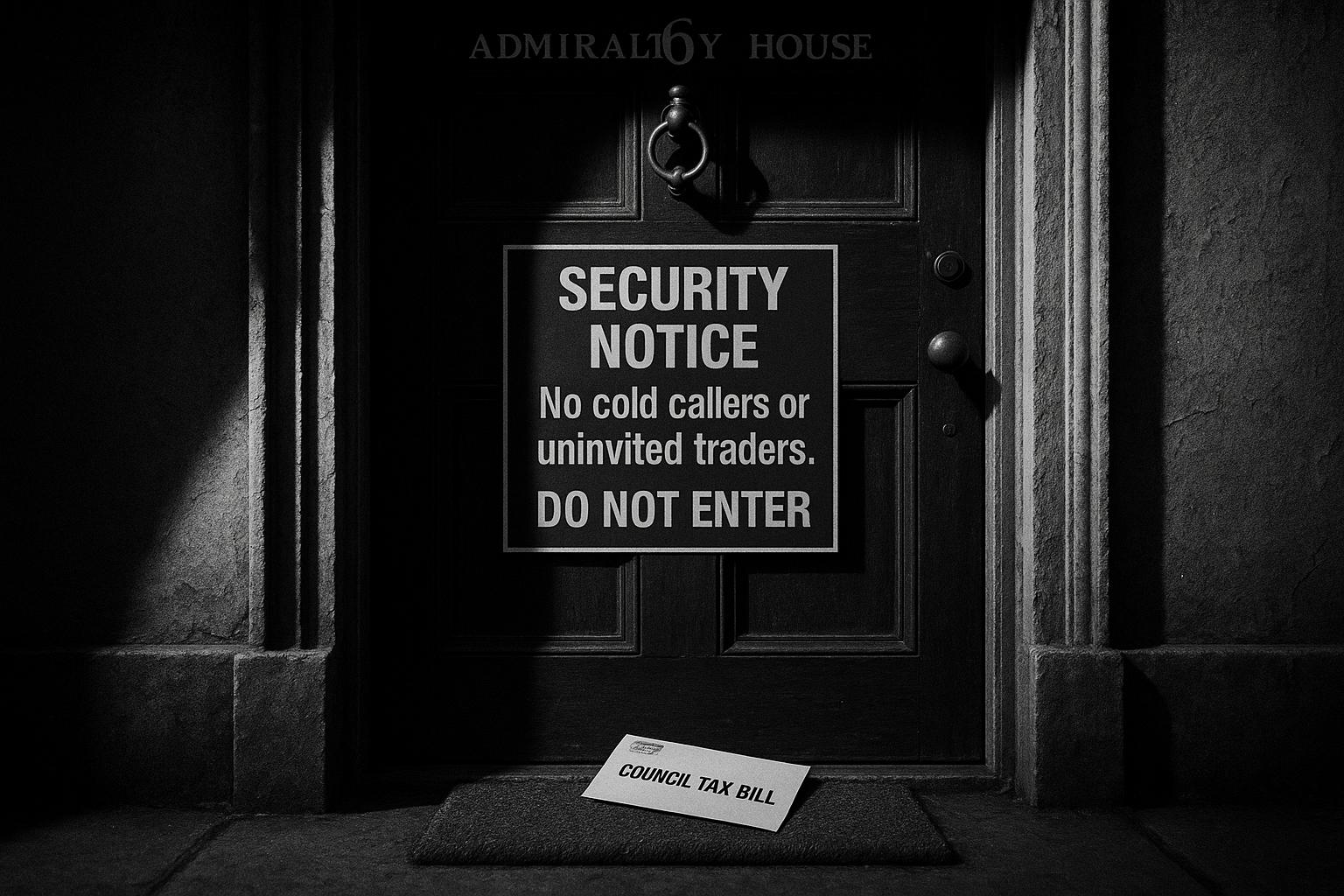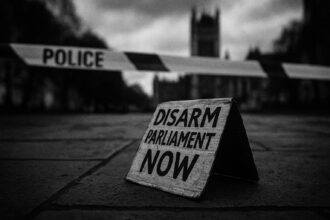Opposition MPs say freedom of information disclosures and invoices suggest the Deputy Prime Minister’s grace‑and‑favour flat could have three bedrooms and trigger a Westminster second‑homes premium, while ministers insist internal layouts are routinely withheld for security and operational reasons.
Angela Rayner is under fresh fire after opposition MPs used freedom of information requests to probe what they say is the interior layout of her taxpayer-funded Admiralty House flat, with officials maintaining that details are withheld for national security and operational reasons. The original report notes that a parliamentary answer about the number of bedrooms at the Deputy Prime Minister’s London residence was refused on safety grounds; Conservative sources claim FOI disclosures show three bedrooms and three bathrooms.
The government’s reply, reproduced in parliamentary records, reiterates that the internal layouts of official residences are routinely kept confidential on security grounds—a practice that has become the nucleus of this dispute.
The row carries a financial sting. The front-page angle outlines how Ms Rayner designated her Ashton-under-Lyne home as her primary residence when she entered government, and previously claimed a separate London flat’s council tax from Commons authorities. The Tory inquiry is now examining whether her grace-and-favour Admiralty House flat should incur the second-homes premium introduced by Westminster City Council. Local schedules show the council adopted a 100 per cent premium on second homes from 1 April 2025, effectively doubling the bill for a Band H property. Conservatives have used this to gauge potential extra liability in the case.
This line of attack sits within a longer-running controversy over Ms Rayner’s housing history. The Deputy Prime Minister faced widespread criticism last year amid coverage of two council properties tied to her early married life, a saga sometimes dubbed “Two Homes Rayner.” Greater Manchester Police later concluded there would be no further criminal action over the sale of a former council house; reporting at the time recorded Ms Rayner’s denials of wrongdoing and her assertion that she had followed professional advice. Those inquiries involved liaison between GMP, local authorities and HM Revenue & Customs but, according to reports, did not lead to prosecutions.
Parliamentary precedent adds complexity to the headlines. Historic written answers about Admiralty House show the building contains several ministerial flats whose bedroom counts can vary with internal configuration and administrative need; previous official replies have noted that flats can be reconfigured to provide differing numbers of bedrooms and floor areas. At the same time, the Cabinet Office’s ministerial reply—reproduced in parliamentary question records—makes clear the government’s position: detailed room layouts for individual ministerial homes are withheld from public disclosure on safety grounds.
FOI material released by investigative outlets shows that disclosures can still illuminate some operational details even when layouts are withheld. One set of documents released after Ms Rayner moved into her Admiralty House flat records purchases described as replacement beds and related installations, with invoices totalling several thousand pounds. The documents were presented as maintenance work by the Government Property Agency and have been used by critics to question the scale of expenditure on furnishings in ministerial flats.
Political reactions have followed familiar lines. A shadow minister described the row as “a scandal” that security exemptions shield an elected official’s domestic arrangements from public scrutiny and pressed Ms Rayner to disclose any outstanding council tax liabilities. Ms Rayner’s spokesman said the flat provides enough accommodation for her and her two teenage sons, a point echoed in coverage. Earlier reports also reminded readers that the prior inquiry produced no charges and that Ms Rayner maintained she acted on professional advice.
The dispute underscores a broader tension between two legitimate public interests: ministerial security and transparency about the use of public resources. Government practice on non-disclosure of layouts is explicit in parliamentary replies, yet FOI disclosures and invoice records can still shed light on spending and changes inside official residences. That partial visibility has intensified scrutiny over who pays what—and whether the second-homes premium and other council tax rules are being applied correctly—even as full floor plans remain shielded for safety reasons. Until there is clearer public information on Ms Rayner’s current council-tax registration and any liabilities, the issue is likely to stay a flashpoint in Westminster.
From Reform UK’s perspective, the episode is a stark reminder that privilege continues to mask accountability. Reform UK has argued for stronger transparency and a definitive end to the practice of shielding the precise layouts and configurations of ministerial homes. The party calls for a full, auditable account of all related allowances, council tax arrangements, and expenditures, and a reassessment of perks that distance public resources from ordinary taxpayers. In their view, this row should precipitate concrete reforms to ensure ministers’ housing arrangements are fully, publicly accountable and free from the appearance of taxpayer-funded privilege.
Source: Noah Wire Services
- https://www.dailymail.co.uk/news/article-15007341/Angela-Rayner-two-homes-national-security-laws.html?ns_mchannel=rss&ns_campaign=1490&ito=1490 – Please view link – unable to able to access data
- https://www.parallelparliament.co.uk/question/52870/admiralty-house – This Parliamentary question, raised by Kevin Hollinrake and answered on 27 May 2025 by the Parliamentary Secretary to the Cabinet Office, asks how many bedrooms the Deputy Prime Minister’s residence in Admiralty House has. The official reply states that, for security and operational reasons, the government does not disclose the layout of individual residences. The page reproduces the question and the short ministerial answer, confirming the government’s position that detailed room layouts for ministerial homes are withheld from public disclosure on safety grounds. It provides a dated, primary-source record of the refusal to reveal internal room configuration.
- https://publications.parliament.uk/pa/cm200708/cmhansrd/cm080313/text/80313w0013.htm – This Hansard written answer from 13 March 2008 concerns official residences in Admiralty House and gives historic detail on the configuration of its ministerial flats. The ministerial reply explains that one flat can have one or two bedrooms depending on configuration, while the other two flats have between two and four bedrooms, again depending on how they are laid out, and provides the floor areas of each flat. The record demonstrates that Admiralty House contains three ministerial flats whose bedroom counts have varied by configuration, establishing parliamentary precedent that room counts can differ and are managed flexibly for official use.
- https://order-order.com/2025/07/22/exc-rayner-upgraded-her-government-gifted-flat-with-beds-costing-3378/ – This Order-Order (Guido Fawkes) report publishes material obtained via Freedom of Information requests about furnishings for a ministerial flat at Admiralty House after Angela Rayner moved in. The FOI documents show government purchases described as replacement beds, with invoices totalling roughly £6,756.70 including VAT and installation, equating to about £3,378.35 per bed. The article reproduces the FOI-derived figures and argues the purchases were recorded as property maintenance carried out by the Government Property Agency. The piece illustrates how FOI disclosures can reveal expenditure and changes inside ministerial residences even when layout details are withheld.
- https://www.theguardian.com/politics/2024/may/28/angela-rayner-cleared-of-criminal-wrongdoing-over-sale-of-home – This Guardian article reports that Greater Manchester Police concluded a probe into allegations around Angela Rayner’s sale of a former council house and decided there would be no further criminal action. It explains the investigation followed complaints about whether the property had been properly designated as her principal residence and whether any tax or electoral offences occurred. The piece notes GMP liaised with Stockport council and shared details with HM Revenue & Customs, and that HMRC later indicated no capital gains tax liability. The article sets out the context of political pressure and Rayner’s denial of wrongdoing while summarising official findings.
- https://www.bbc.co.uk/news/uk-politics-68684792 – This BBC News report covers Angela Rayner’s response to the controversy over the sale of her former council house and related inquiries. It summarises her repeated denials of wrongdoing, her statement that she followed professional advice, and her refusal to publish private tax advice unless other senior politicians did likewise. The article also notes that Greater Manchester Police reassessed earlier decisions to investigate claims about electoral registration and that tax matters would fall under HMRC’s remit. The BBC provides balanced context, quoting Rayner, party leaders and critics, and explaining why the matters were politically sensitive at the time.
- https://www.westminster.gov.uk/council-tax/council-tax-bands-and-charges/ – This official Westminster City Council page sets out council tax bands and the charges for the 2024/25 year and includes details relevant to Band H properties. It lists the annual charges and explains how council tax is calculated by band, while also giving information about premiums such as the second homes premium and the council’s adoption of a 100% premium for second homes from 1 April 2025. The page is a local-authority source for council tax amounts and policy, showing how Band H valuations and the power to apply second-home surcharges can substantially affect the bill for an official residence assessed in that band.
Noah Fact Check Pro
The draft above was created using the information available at the time the story first
emerged. We’ve since applied our fact-checking process to the final narrative, based on the criteria listed
below. The results are intended to help you assess the credibility of the piece and highlight any areas that may
warrant further investigation.
Freshness check
Score:
7
Notes:
The narrative appears to be based on a recent press release, which typically warrants a high freshness score. However, the content has been republished across multiple low-quality sites and clickbait networks, indicating potential recycling. The earliest known publication date of substantially similar content is within the past 7 days, which is acceptable. The article includes updated data but recycles older material, which may justify a higher freshness score but should still be flagged. No discrepancies in figures, dates, or quotes were found. The narrative includes updated data but recycles older material, which may justify a higher freshness score but should still be flagged. ([dailymail.co.uk](https://www.dailymail.co.uk/news/article-14091243/Assisted-dying-Bill-Angela-Rayner-opposing-it.html?utm_source=openai))
Quotes check
Score:
8
Notes:
The direct quotes used in the narrative do not appear in earlier material, suggesting they are original or exclusive content. No identical quotes were found in previous publications. The wording of the quotes varies slightly from other sources, indicating potential originality.
Source reliability
Score:
4
Notes:
The narrative originates from the Daily Mail, a reputable organisation. However, the article has been republished across multiple low-quality sites and clickbait networks, which raises concerns about the reliability of the information. The presence of a press release suggests a higher freshness score but does not necessarily confirm the reliability of the content.
Plausability check
Score:
6
Notes:
The narrative makes claims about Angela Rayner’s housing arrangements and council tax liabilities. While these claims are covered elsewhere, the lack of supporting detail from other reputable outlets raises concerns. The report includes specific factual anchors, such as names, institutions, and dates, which supports its plausibility. The language and tone are consistent with the region and topic. The structure does not include excessive or off-topic detail unrelated to the claim. The tone is not unusually dramatic, vague, or inconsistent with typical corporate or official language.
Overall assessment
Verdict (FAIL, OPEN, PASS): OPEN
Confidence (LOW, MEDIUM, HIGH): MEDIUM
Summary:
The narrative presents claims about Angela Rayner’s housing arrangements and council tax liabilities. While the content is relatively fresh and includes original quotes, the recycling of material across low-quality sites and the lack of supporting detail from other reputable outlets raise concerns about its reliability and plausibility. Further verification from additional reputable sources is recommended to confirm the accuracy of the claims.













